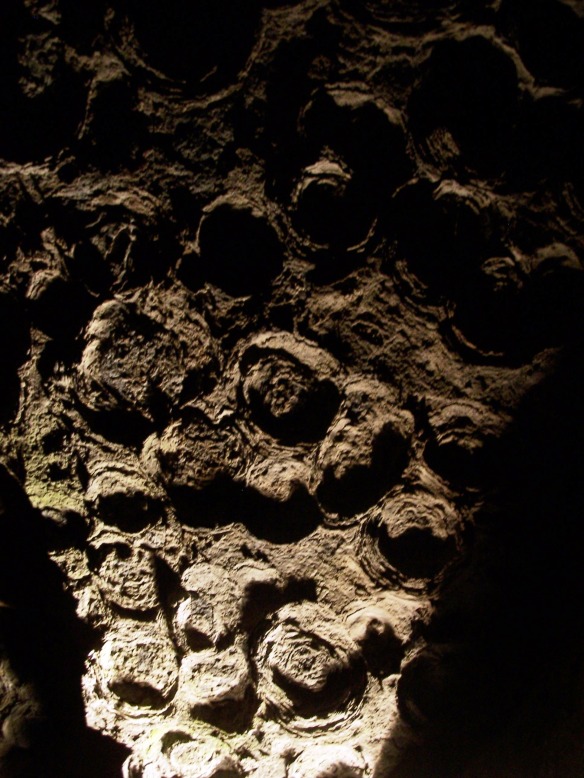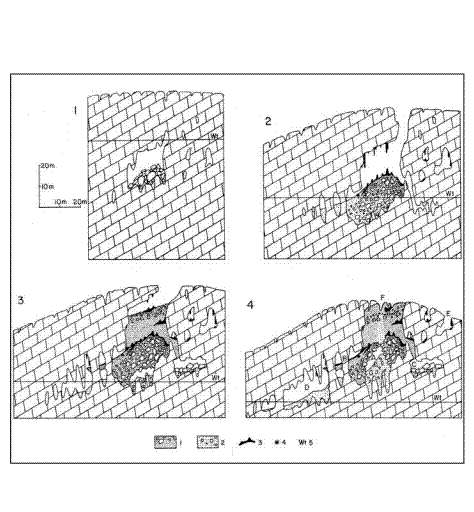To a large degree, our project is a field survey of the geological formation known as the Malmani Dolomite Subgroup, of the Chuniespoort Group of the Transvaal Supergroup. The Transvaal Supergroup is an extensive geological sedimentary rock sequence extending across much of the northern part of South Africa and into Botswana (Ericksson & Altermann, 1998). The Malmani Dolomites are just one rock formation in this sequence, and they are of interest to us because it is in the dolomites that we find the historic lime mines, and thus palaeocave fossil deposits. On the map below, the Transvaal Supergroup, including the Malmani dolomites, is indicated by the light blue-shaded areas in the north & central regions of South Africa. Geological dates for these rocks indicate that they were formed between 2.6-2.5 billion years ago, making them one of the oldest dolomite formations known.

Simplified Geology of South Africa: The Malmani Dolomites in blue in the north and central parts of the country – unfortunately, NOT at the coast!
Dolomite is a type of limestone rock that forms in warm, shallow seas from the slow accumulation of the remains of marine microorganisms and fine-grained sediment. It differs from other limestone rocks in having a higher magnesium content, and these dolomites are also characterised by fossils of algae formations that are known as stromatolites (see picture below). These materials contain high levels of calcium carbonate, and thus such rock formations are often referred to as carbonates.

Photo of stromatolite fossils (the clusters of concentric structures) in the roof of Sudwala Cave, Mpumalanga. These represent ancient algae formations in the sea at the time that the dolomite rock sediments were accumulating, roughly 2.6 billion years ago.
One important quality of dolomite is that, over long periods of time, this rock is water soluble – ground water is a weak acid that will erode away the calcium carbonate matrix as it percolates through cracks and fissures within dolomite rock layers. This process eventually results in the occurrence of underground solution cavities, and when these break through to the surface due to erosion or collapse they form caves and sinkholes (see schematic below). Further percolation of groundwater through these solution cavities results in the precipitation of calcium carbonate to form various kinds of speleothem – the beautiful cave formations known as stalactites, stalagmites, and other structures. In addition, once the cave or sinkhole is open to the surface, it will begin to fill in with sediment, and if occupied by carnivores the infill will include animal bone. In South Africa, the ancient caves of this kind were open to the surface, and filling in with sediment and bone, between roughly 3-1 million years ago.

Idealised model of cave formation in dolomites (Martini, et al. 2003). The brick-like symbol indicates dolomite, and the differently-stippled symbols represent separate infill deposits over time.
Thus, over a period of millions of years solution cavities will form in the dolomites, break through to the surface as caves and sinkholes, and then fill in again with sediment and bone. The constant percolation of groundwater through the deposits will cement everything together in a calcium-carbonate matrix, and fossilise the bones. Finally, lime miners in the early 20th century blasted and excavated into the dolomite formations to retrieve the extensive cave formations (calcium carbonate, or ‘lime’), and in so doing often exposed the infill deposits containing fossilised bone. This attracted the attention of palaeoanthropologists who were interested in the fossil record of human ancestors and other mammals.
And that is why we are in South Africa surveying the Malmani Dolomite formation, looking for ancient cave deposits!
– KL Kuykendall
